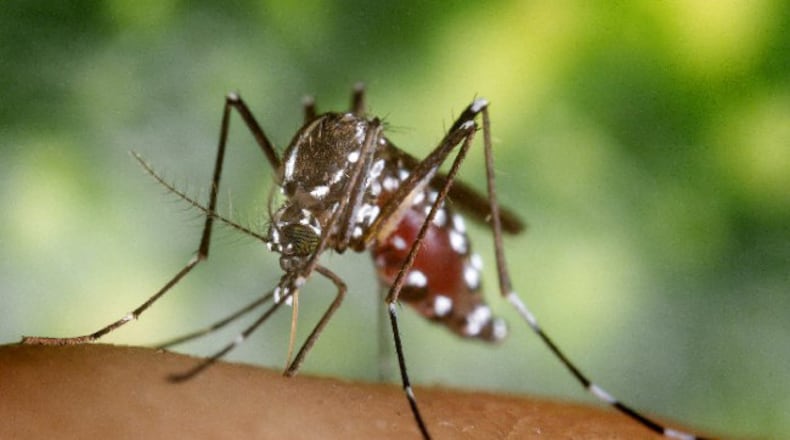“With the number of positive West Nile Virus mosquito samples we have found, it is disappointing but not surprising to have a human case,” said Larry Shaffer, Director of Environmental Health, in the release. “The most effective mosquito control is for everyone to get rid of standing water at their homes to eliminate breeding sites. It’s also important to wear appropriate clothing and use an EPA approved repellent when outdoors in the early morning or evening.”
CCCHD works with the Ohio Department of Health (ODH) to identify probable cases of West Nile virus.
An Ohio resident earlier this year is presumed to have contracted West Nile virus, but the exposure occurred in Arizona.
The Mad River Twp. resident’s exposure is believed to have occurred in Clark County, according to CCCHD. This is Clark County’s first human case of the virus reported since 2018 when two human cases were documented, and the fourth human West Nile virus case since 2013, CCCHD said.
Dozens of mosquito samples collected by CCCHD in the last four weeks have tested positive for West Nile virus, and CCCHD reported Aug. 10 that WNV-infected mosquitos were widespread throughout the area, the release said.
Seven more samples tested positive this week from all over the county. Those samples added to the growing list of West Nile virus-positive mosquitos identified in Clark County in the last month, the release said.
Mosquitos sampled and collected throughout the county are submitted to the Ohio Department of Health (ODH) as part of the district’s Vector-Borne Disease Program.
The best way to avoid the West Nile virus infection is to prevent mosquito bites, and the best way to avoid being bitten by a mosquito is to eliminate habitats where mosquitos can survive and reproduce, CCCHD said. Other methods of preventing bites include applying repellents on exposed skin; wearing long sleeves and pants or consider staying indoors; if traveling, checking for travel advisories; having repellent and long clothes readily available; doing outside activities when mosquito activity is less prevalent; making sure screens on windows and doors are free of holes or rips, or opting to use air conditioning instead of opening windows.
Residents’ cooperation in getting rid of standing water is the most effective means of reducing the total number of mosquitos and far more effective that spraying.
In response to the confirmed presence of West Nile virus, CCCHD is:
- Inspecting the affected area and working with property owners to reduce breeding sources by draining stagnant water or treating stagnant water with products containing Bacillus thuringiensis israelensis. Bti is safe for humans and pets and only affects the mosquito larvae.
- Misting the affected area with Duet® to reduce the adult mosquito population when weather permits. While safe for humans and pets, residents who have a concern about misting may opt out by calling 937-390-5600 or emailing the request and their address to environmental@ccchd.com.
- Continuing to monitor the area for West Nile virus.
West Nile virus is most commonly spread by infected mosquitoes and can lead to severe fever, encephalitis (inflammation of the brain) or meningitis (inflammation of the lining of the brain and spinal cord.)
Mosquitoes become infected when they feed on infected birds. Infected mosquitoes can then spread the virus to humans and other animals when they bite, the release said.
Approximately 80% of people who are infected with WNV will not show any symptoms at all, but there is no way to know in advance if you will develop an illness. Those who develop symptoms usually do so between three to 14 days after they are bitten by the infected mosquito, according to the release.
There is no specific treatment for West Nile virus infection, and care is based on symptoms. About one in 150 people infected with the virus will develop severe illness. The severe symptoms can include high fever, headache, neck stiffness, stupor, disorientation, coma, tremors, convulsions, muscle weakness, vision loss, numbness and paralysis. These symptoms may last several weeks, and neurological effects may be permanent. Up to 20% of people who become infected will have symptoms that can include fever, headache, body aches, nausea, vomiting and sometimes swollen lymph glands or a skin rash on the chest, stomach and back. Symptoms can last for a few days or up to several weeks, CCCHD said.
About the Author


